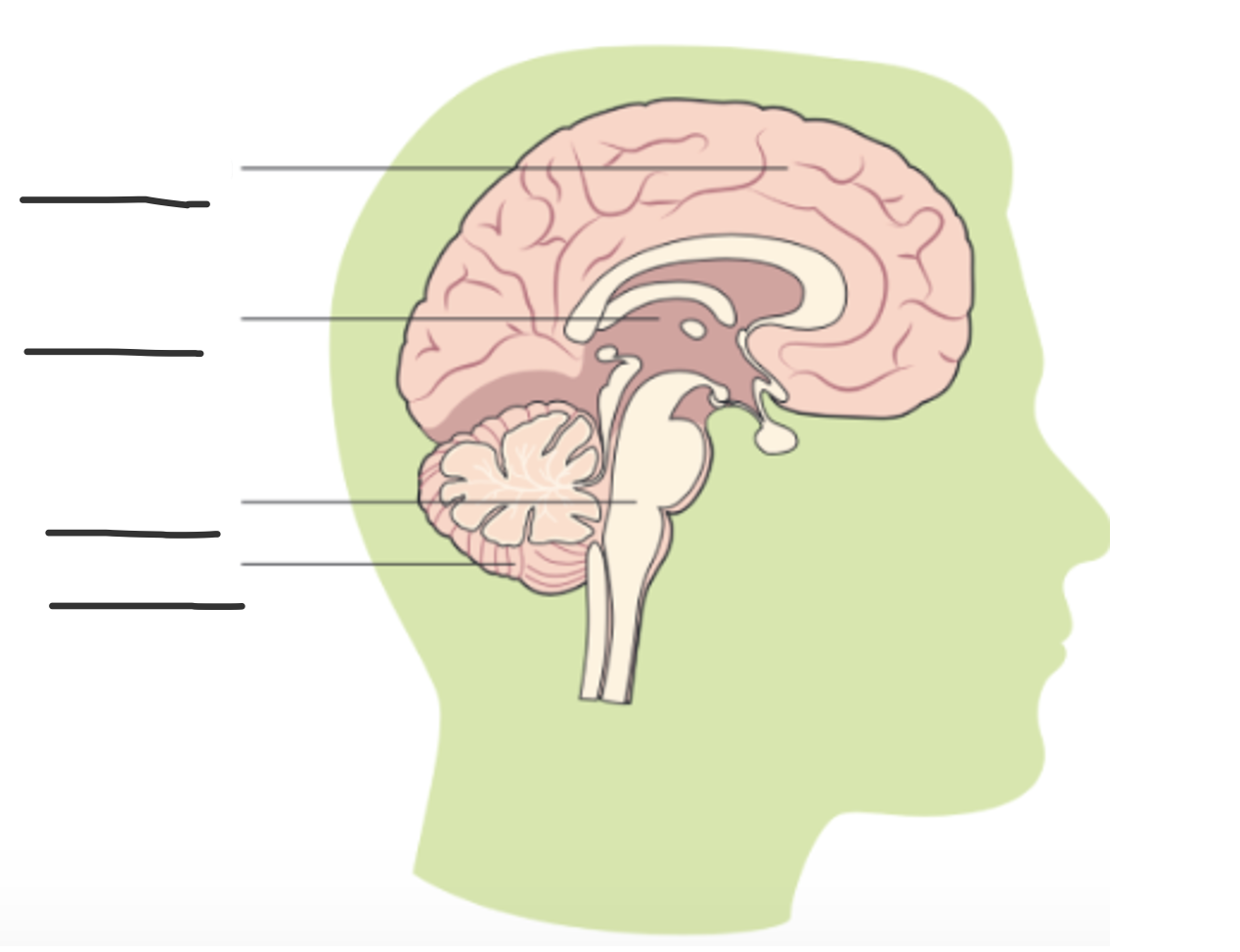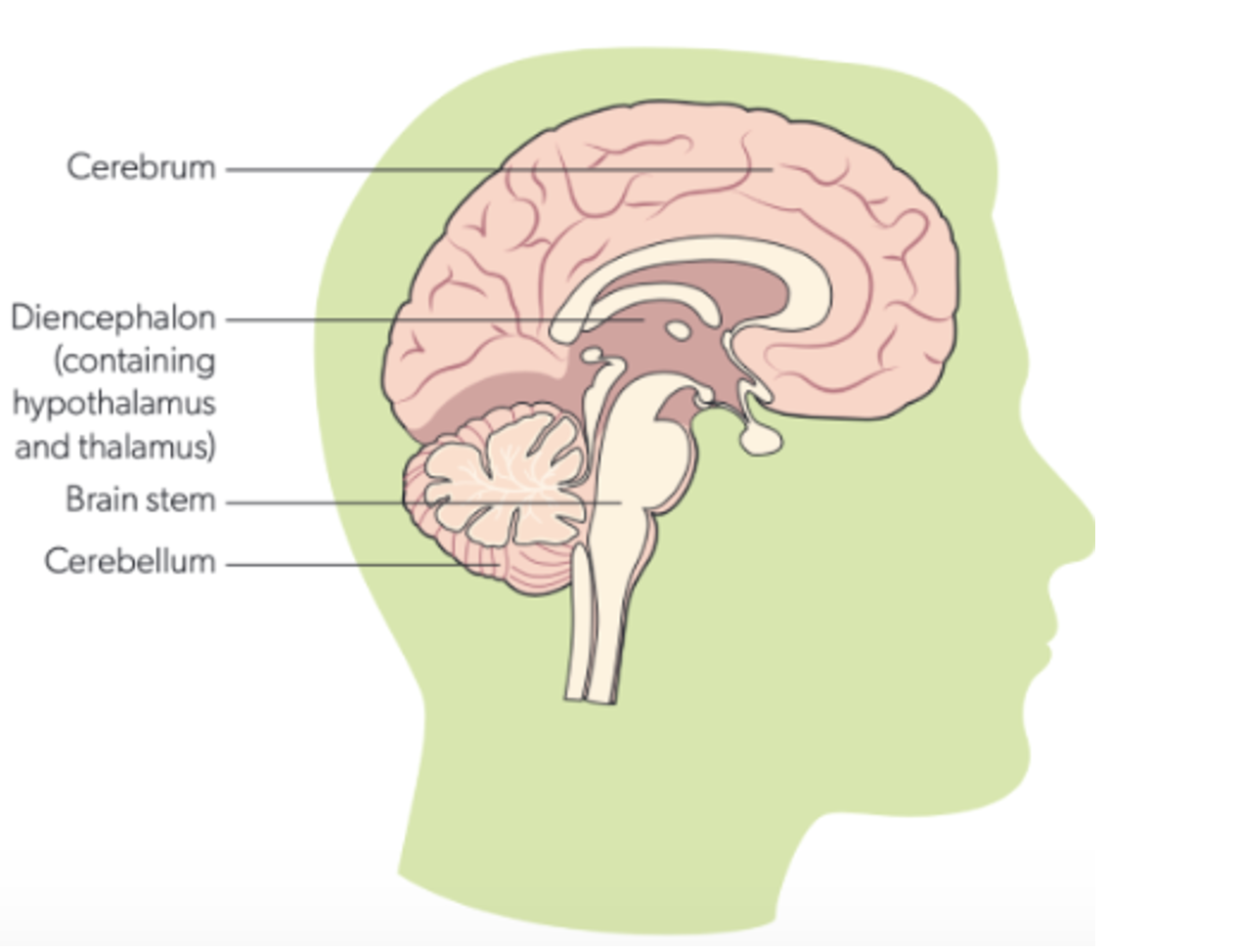Nervous system
1/23
Earn XP
Description and Tags
Name | Mastery | Learn | Test | Matching | Spaced |
|---|
No study sessions yet.
24 Terms
Central Nervous System (CNS)
Brain for conscious and unconscious nervous activity. Maintains homeostasis. Spinal-cord for communication
Peripheral Nervous System (PNS)
All the nerves outside the CNS. Sensory (afferent) and motor (efferent) nerves. Motor nerves are divided into somatic NS or autonomic NS
Somatic
Somatic controls voluntary movement of skeletal muscles.
Autonomic
Autonomic controls involuntary e.g.; HR, breathing, digestion. Is divided into sympathetic NS and parasympathetic NS
Sympathetic Nervous system (SNS)
fight or flight e.g.; increases HR, BP, vital capacity, metabolism, sweat.
Parasympathetic Nervous System
decreases HR, BP, ventilation, increases digestion, constriction of pupils, airways


brain stem
Connect brain to spinal column deals with subconscious information .
cerebellum
coordinates skilled movement
Cerebrum
2 hemispheres, contains cerebral cortex for conscious thinking and decision making
thalamus
Sensory relay, motor control, consciousness
hypothalamus
Homeostasis, autonomic control, hormone regulation
Intrinsic excitation
Sinoatrial node in right atrium stimulates contraction of atria. The atrioventricular node picks up the signal and sends to bundle of His which passes the pulse to Purkinje fibres which contract ventricles.